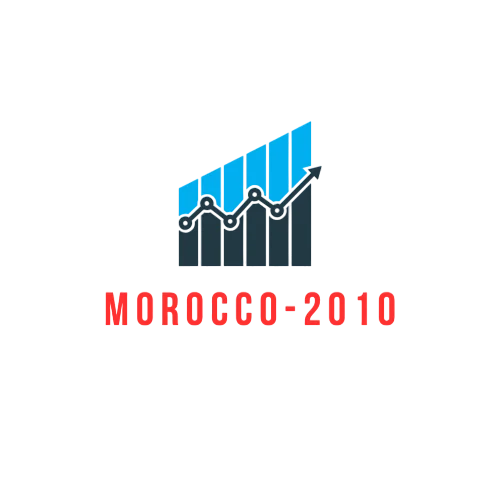Navigating the healthcare payment system can feel like trying to solve a Rubik’s cube blindfolded. With economic trends constantly shifting, understanding how these changes impact payments is crucial for patients and providers alike. From the rise of value-based care to the increasing role of technology, the landscape is evolving faster than a doctor’s handwriting.
Table of Contents
ToggleOverview of the Healthcare Payment System
The healthcare payment system comprises various mechanisms that dictate how healthcare services receive funding. It consists primarily of private insurance, government programs, and out-of-pocket payments. Employers often provide private insurance, which covers a significant portion of healthcare expenses. Medicare and Medicaid serve as crucial government programs, offering support to specific populations, such as older adults and low-income individuals.
Value-based care increasingly influences payment structures. This approach emphasizes patient outcomes over service volumes. Providers that deliver higher-quality care often receive better compensation. Such trends aim to improve quality while controlling rising costs.
Technology plays an essential role in reshaping the payment landscape. Electronic health records facilitate seamless data sharing, making it easier for providers to track patient outcomes. Telemedicine has grown in popularity, offering patients convenient access to care while navigating payment complexities.
Change is evident in patients’ payment experiences as they become more engaged in their health management. Transparency in pricing encourages patients to make informed choices. Patients frequently prioritize understanding their financial responsibilities regarding care.
Providers must adapt to these evolving expectations, ensuring that payment structures align with patients’ needs. Collaboration with payers helps develop innovative payment models. Increased emphasis on preventive care ultimately enhances patient health and reduces long-term costs.
Observations reflect a shift towards integrating payment systems with care delivery. Embracing change fosters the development of more sustainable and efficient healthcare financing models. Adapting to these economic trends positions both providers and patients to benefit from improved health outcomes.
Current Economic Trends in Healthcare Payments
Recent shifts in healthcare payments highlight a transformative era. The focus increasingly pivots towards enhancing patient care and outcomes.
Shift to Value-Based Care
Value-based care emphasizes quality over quantity. Payment models reward healthcare providers for improving patient health rather than the volume of services rendered. Organizations report that implementing value-based frameworks leads to better patient satisfaction and reduced costs. The Medicare Access and CHIP Reauthorization Act of 2015 reinforces this trend, encouraging alternative payment models that prioritize patient outcomes. Hospitals and doctors responding to this shift often see improved collaboration and care coordination.
Rise of Telemedicine Payments
Telemedicine’s adoption continues to surge, particularly post-pandemic. Patients increasingly prefer remote consultations, prompting payers to expand coverage for virtual care. Recent data shows that nearly 80% of healthcare executives plan to invest in telehealth technology. Billing systems now accommodate these new services, offering flexible payment structures. Insurers are adapting reimbursement policies to support the growing demand for telehealth services. Providers leveraging telemedicine often find it enhances patient access and satisfaction.
Impact of Policy Changes on Payment Models
Policy changes significantly shape healthcare payment models. Evolving regulations influence how funds are allocated and disbursed within the system.
Government Regulations and Funding
Government funding plays a crucial role in determining the effectiveness of healthcare payment structures. Programs like Medicare and Medicaid establish payment rates that affect provider revenue and patient access. Regulations under the Affordable Care Act promote value-based care initiatives, prioritizing quality over quantity. Changes in funding mechanisms can shift resources towards preventive care, ultimately improving patient outcomes. Additionally, the Centers for Medicare and Medicaid Services continually refine reimbursement strategies, adapting them to emerging healthcare trends and patient needs.
Private Insurance Adjustments
Private insurance companies also adjust payment structures in response to policy changes. Insurers increasingly adopt value-based models, integrating performance metrics to enhance patient care. Many insurers are developing bundled payment programs, where providers receive a single payment for entire treatment episodes. These initiatives align financial incentives with patient health outcomes, fostering quality care. As telemedicine expands, private insurers are modifying reimbursement policies to cover virtual consultations, meeting the growing demand for accessible healthcare services. Overall, these adjustments are vital in shaping a more efficient and patient-centered healthcare payment system.
Challenges Facing the Healthcare Payment System
The healthcare payment system faces significant challenges that impact both patients and providers. Rising costs, payment inequities, and regulatory pressures create hurdles that influence the delivery of care.
Rising Costs of Care
Healthcare expenditures continue to increase, placing financial strain on patients and payers. In 2021, total healthcare spending in the U.S. reached approximately $4.3 trillion. This trend reflects escalating costs for medical services, prescriptions, and advanced technology. Providers often struggle to balance quality care with the necessity to maintain profit margins. High out-of-pocket expenses lead to patient dissatisfaction and delayed treatment. Consequently, the focus on value-based care becomes critical in mitigating these rising costs. Innovations aimed at reducing overhead and streamlining operations can help improve financial sustainability.
Inequities in Payment Structures
Disparities in payment structures undermine the equity of access to healthcare services. Different reimbursement rates among private insurers, Medicare, and Medicaid create inconsistencies that affect provider income. On average, Medicaid pays about 66% of Medicare rates for similar services. Such inequities can discourage providers from accepting Medicaid patients, impacting their access to care. Vulnerable populations often bear the brunt of these inequities, leading to worsened health outcomes. Addressing payment disparities requires collaboration among stakeholders to design more equitable reimbursement models. Initiatives promoting transparency in pricing and standardized payment structures can help bridge these gaps.
Future Directions in Healthcare Payment Models
Healthcare payment models are rapidly evolving in response to economic trends, technological advancements, and regulatory changes. Organizations are moving towards systems that prioritize value and patient outcomes.
Technological Innovations
Telehealth technology significantly influences healthcare payment models. With nearly 80% of healthcare executives planning investments in virtual care, insurers adapt reimbursement strategies to support these offerings. Increased access to digital health tools enhances patient experiences and satisfaction. Electronic health records streamline data sharing among providers, improving care coordination and efficiency. As technology becomes integrated, real-time data analytics assists in tracking outcomes and refining payment structures.
Emerging Payment Models
New payment models focus on aligning incentives with patient health outcomes. Value-based care systems reward care quality rather than service volume. Bundled payment programs, which cover multiple services related to a single treatment, also gain traction. These innovations reduce costs and enhance patient experience by simplifying the financial process. Additionally, shared savings programs encourage collaboration among providers to improve patient outcomes. Regulatory support, especially from Medicare and Medicaid, drives these models, creating a more sustainable healthcare financing system.
The healthcare payment system is undergoing significant transformation driven by economic trends and technological advancements. As value-based care takes center stage, the focus shifts towards improving patient outcomes rather than merely increasing service volume. This evolution not only enhances patient engagement but also encourages providers to adopt innovative payment models.
Collaboration among stakeholders remains essential to address challenges such as rising costs and payment inequities. By fostering transparency and designing equitable reimbursement structures, the healthcare system can better serve diverse populations. Ultimately, these changes pave the way for a more sustainable and efficient healthcare financing model that prioritizes quality care and patient satisfaction.





